FALL 2019 | WEEK 10
Energy Efficiency Efforts @ SJA

By Chris Dussault
This week we continued our Natural Resource Management unit, examining the topic of energy. We started the week with a visit to the Moore Dam near Littleton, NH. There our students met Matthew Cole, Community Relations Director for Great River Hydro. Cole shared a great deal with us about the dam’s history, capacity, and how it operates an economically-viable power plant in a competitive marketplace. He explained that the price of electricity in the New England market is currently cheap due to competition from natural gas power plants in the region. This has increased the supply of electricity available, driving prices down. We were all impressed with the scale of the dam and the amount of water sequestered in the reservoir. One couldn’t help but sense the potential power that all of that water could produce if released.
One of the more interesting activities from this week was a tour of the SJA campus with Field Semester teacher and Stewardship Director James Bentley. The purpose of the tour was to look at some of the projects that the Academy has undertaken in recent years to make its facilities more energy efficient. Mr. Bentley spoke knowledgeably about each of these projects, as he was involved in implementing many of them in his role as Stewardship Director. Students came away from this activity with an understanding of the importance that energy conservation plays in our energy future. While renewable energy sources will play a more important role in the future, energy that isn’t being consumed due to improved efficiency is the most sustainable energy of all.
Tuesday, 11/5
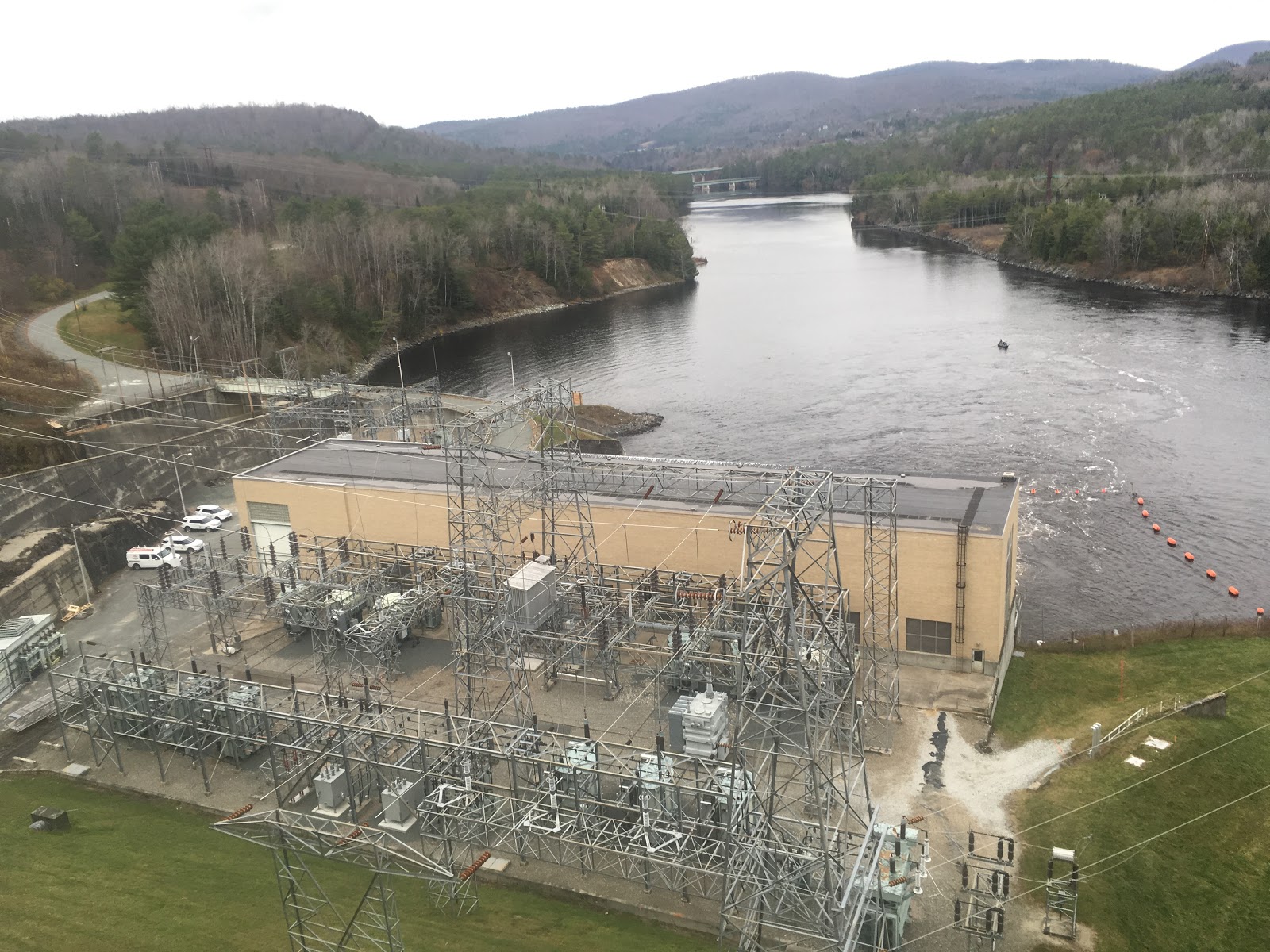
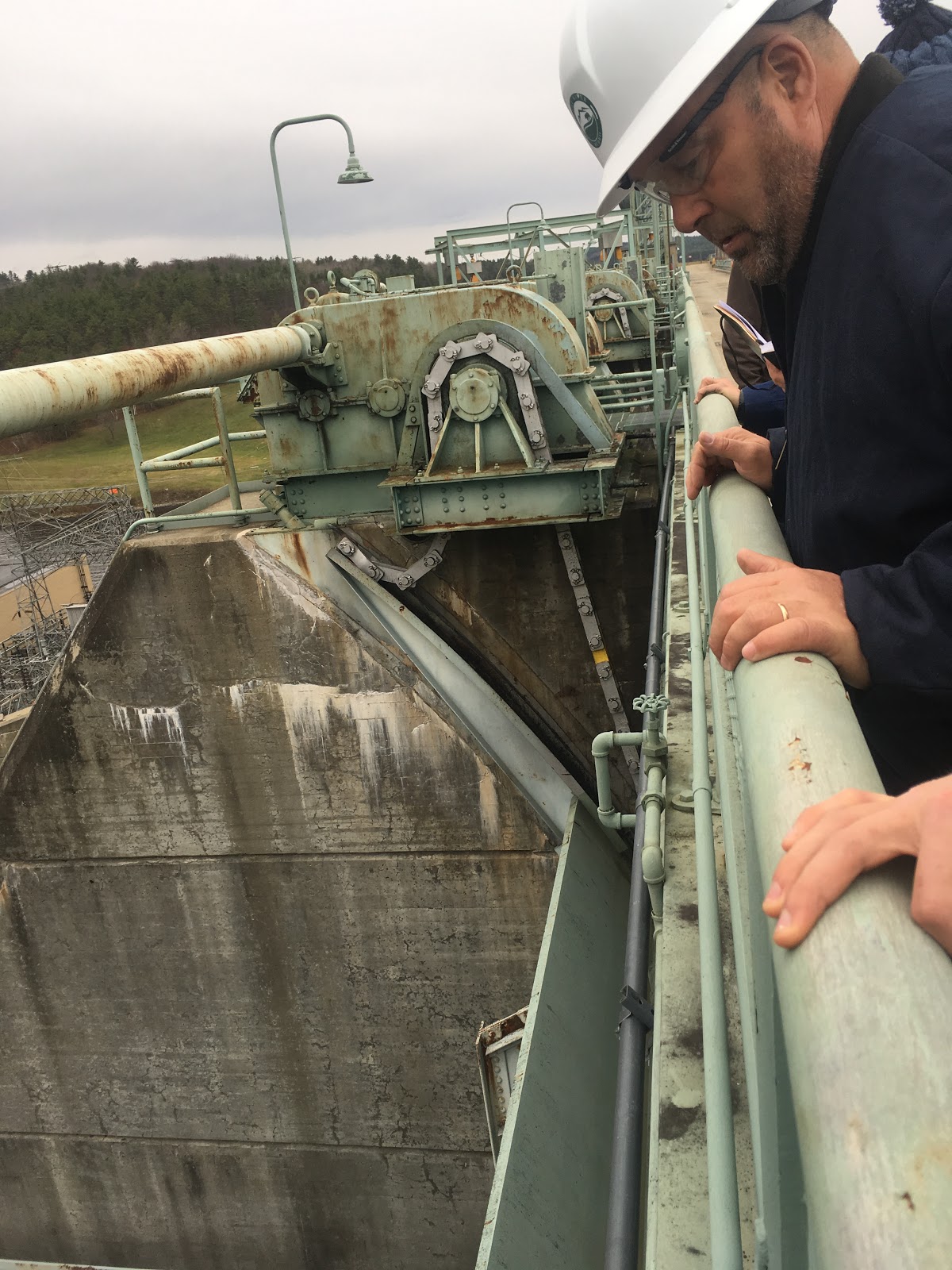
On Tuesday we visited Moore Dam in Littleton, NH. Moore Dam was built in the 1950’s and is currently owned by Great River Hydro, LLC. It is the largest conventional hydro plant in New England at 2,920’ long and 160’ high. The reservoir that it creates covers 3,480 acres of land. Despite its size, there is only enough water in the reservoir to run the dam 30-40% of the time. For this reason, Moore Dam only operates during periods of peak demand. Sustainable operation of the dam is challenging. Moore Dam has to pay property taxes in both Vermont and New Hampshire, even though the entire dam is in New Hampshire. They are also exploring the possibility of installing solar on some of their riverside property in order to diversify their energy portfolio.
Thursday, 11/7
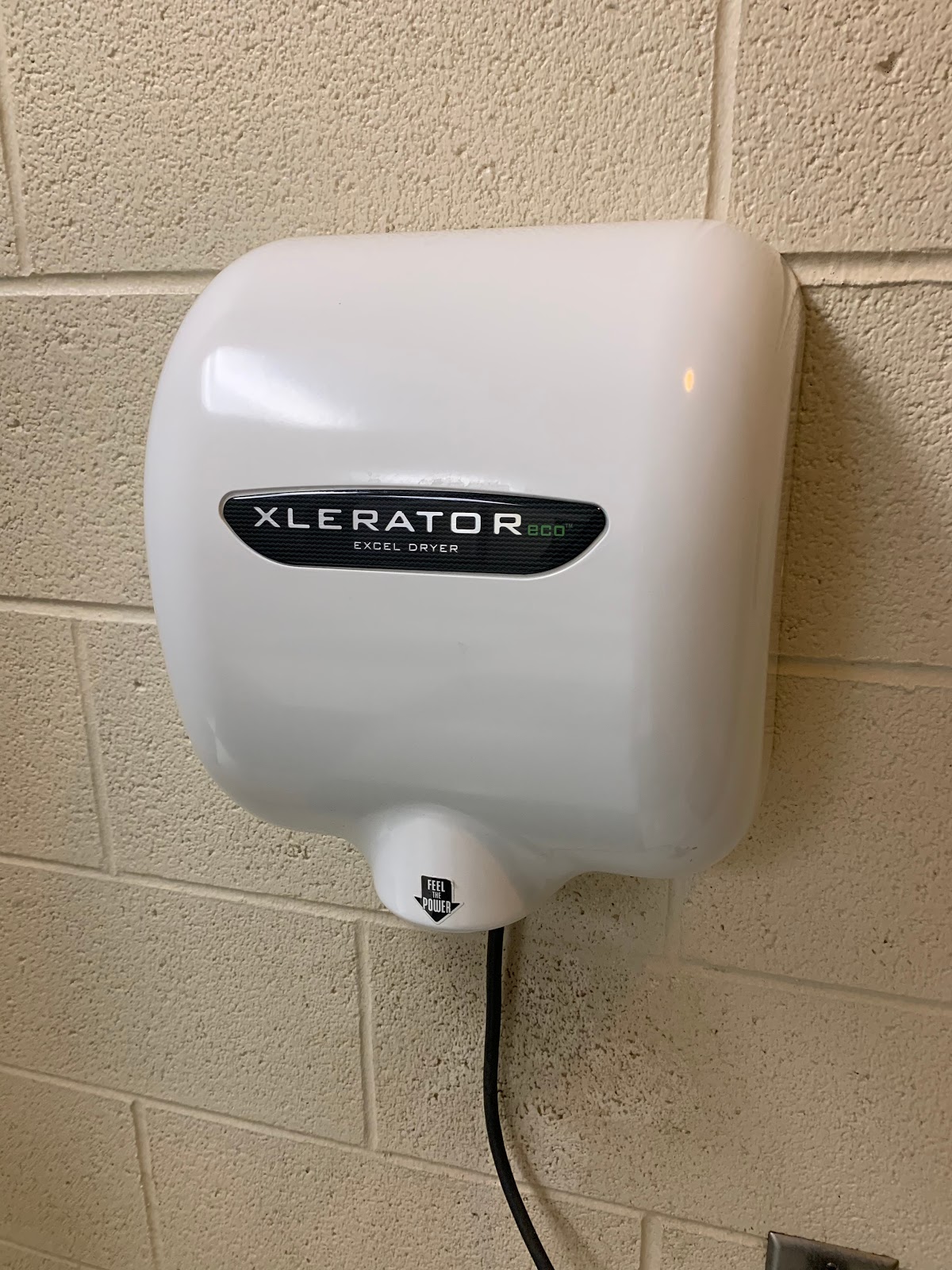
On Thursday morning Mr. Bentley took the class around the campus to show us how our school manages its energy use. The first stop we made was in one of the bathrooms to show us the new hand dryers that where installed by the Academy’s Electricity program. Mr. Bentley showed how these new dryers don’t use heat and require less electricity to run. He also explained how they are easy to install, reduce paper towel consumption, and eliminate labor related to stocking and disposing of paper towels. In the end, doing little things such as this have a bigger impact than one might think.
 .
.
Our next stop was the dIning hall. The dining hall has a mixture of light types, including CFLs and LEDs. The Academy is transitioning from CFLs to LEDs because they are more efficient. The new LEDs also incorporate auto-dimming technology that adjusts the brightness of the lights based on how much daylight is coming into the room.
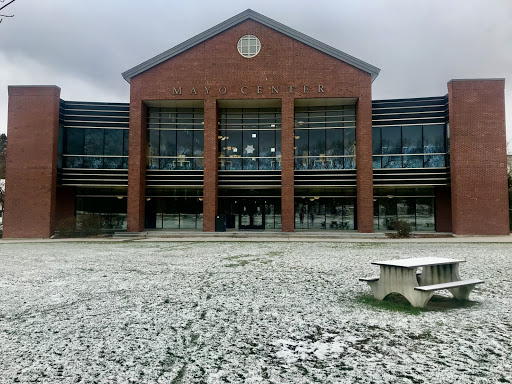
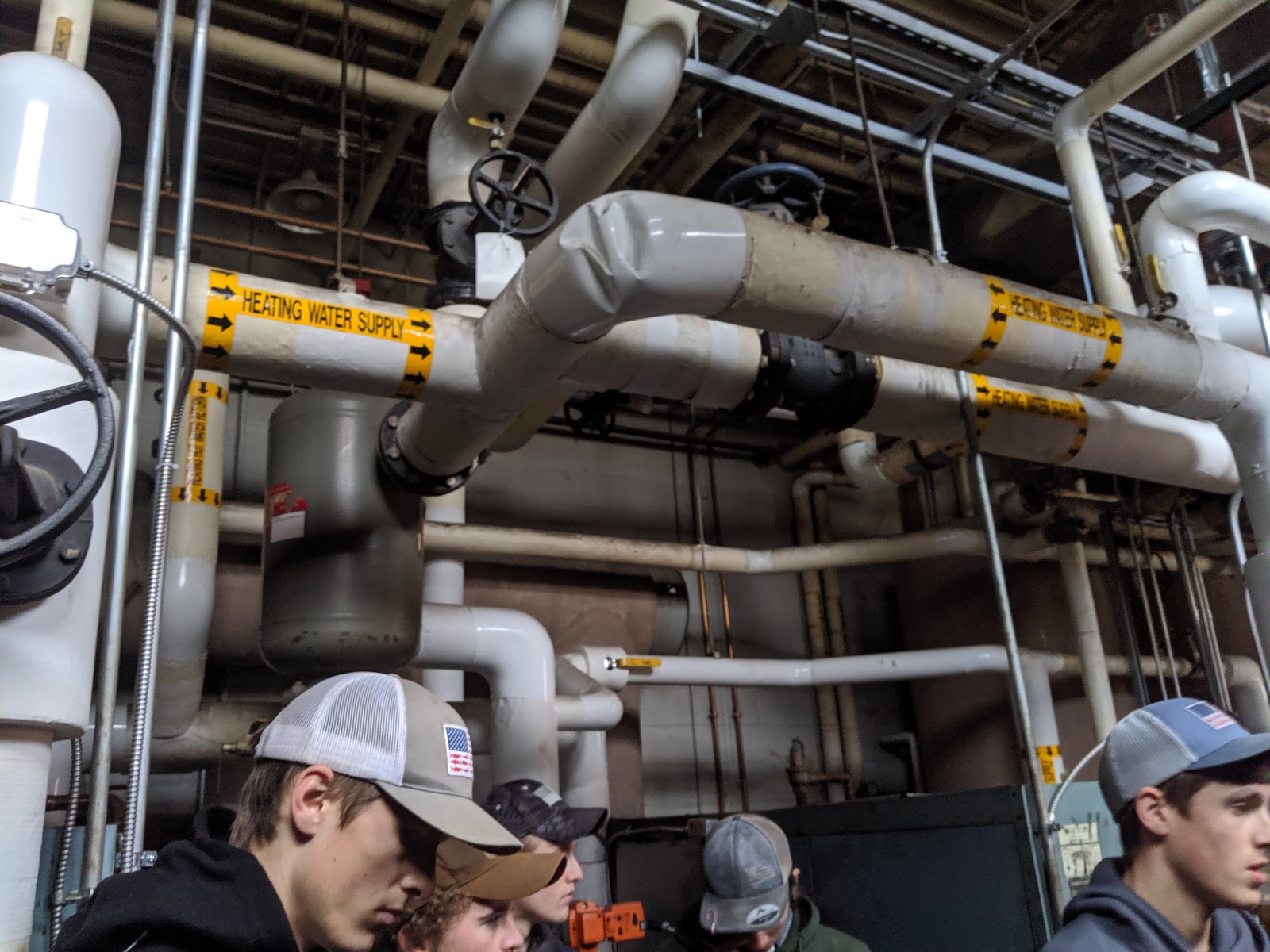
We then made our way to the boiler room in Streeter. You might be surprised to learn that the Streeter boiler unit transfers hot water into the Mayo Center to provide heat for that building. This transfer is called a heat exchanger, and it saves the school money because it decreases the need to buy fuel oil for another heating unit. As water is heated in this system, it circulates through pipes located throughout the buildings to distribute the heat efficiently.
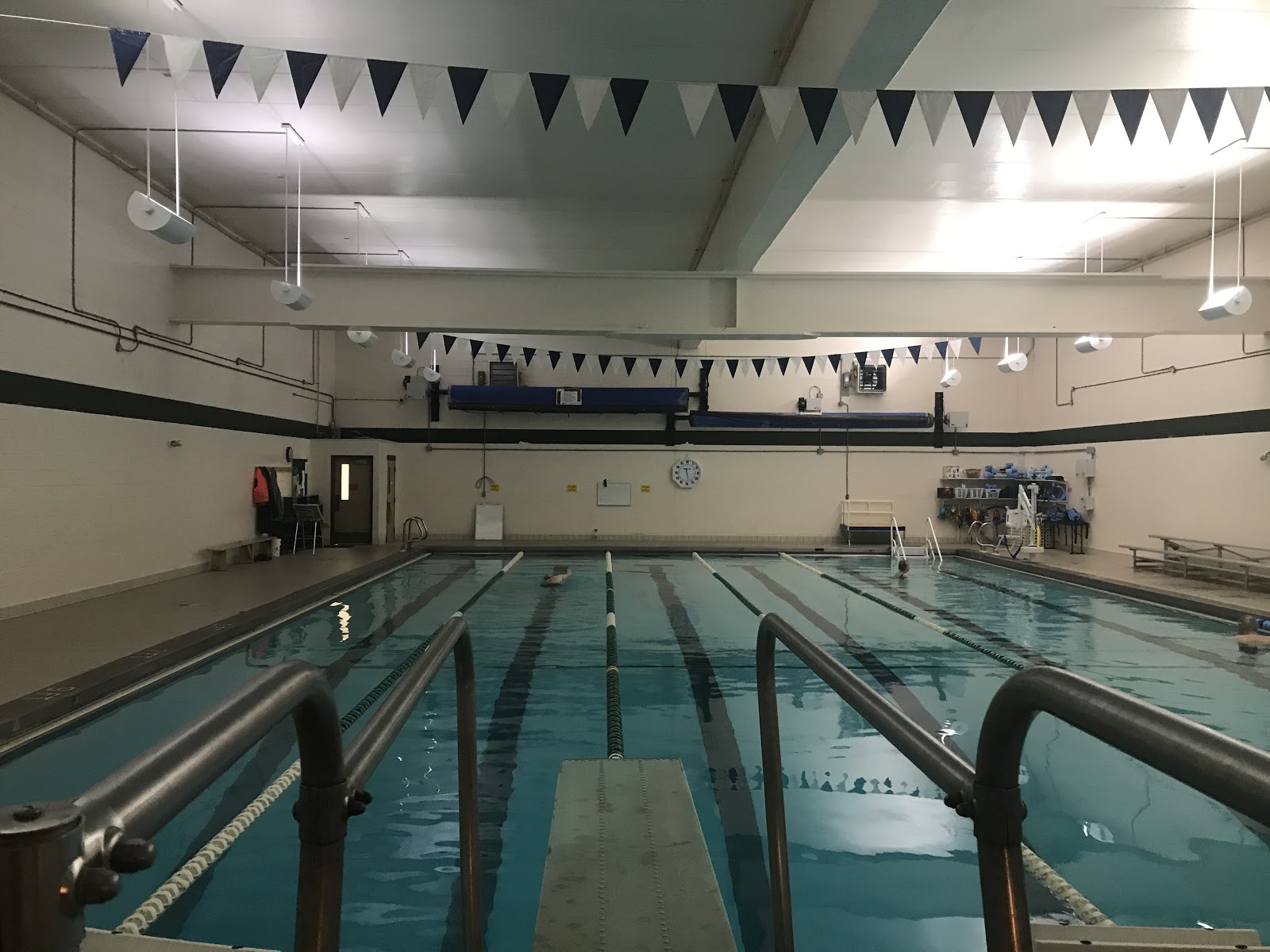
Our next stop was the pool in the Fieldhouse. The pool at St. Johnsbury Academy is open to the public and offers swim lessons, lifeguarding tests and classes. The pool facilities are heated which makes it a big expense for the school, in addition to heating the water in the pool they also have to heat the room. Because the water is kept at 80࿁Fahrenheit, the water evaporates from the pool quickly. In order to make this more efficient, the Academy installed an automatic pool cover to trap the heat and water vapors within the water, cutting expenses for heating in the Field House Complex.The new automatic cover allowed more of the heat to stay in the water, it also helps with reducing costs for energy.
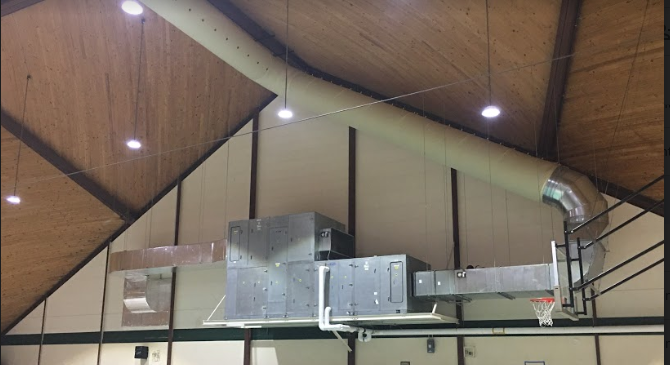
Field House facilities include basketball/tennis courts, an indoor track, a batting/golf cage, volleyball courts, a fully equipped weight room, a cardio room, and a regulation-sized pool. In the past it has cost the school about 600,000 dollars a year for heating the Field House alone. In order to make it more efficient, an air handling unit was installed. These units use a economizor cycle which means they recirculate the heated air that is already in the field house. This cycle is used when the field house is not being used by students, teachers or the public. The school also updated its control system for these areas by installing in a digital control. All together, these updates improved the efficiency of the Field House complex by 25%.

